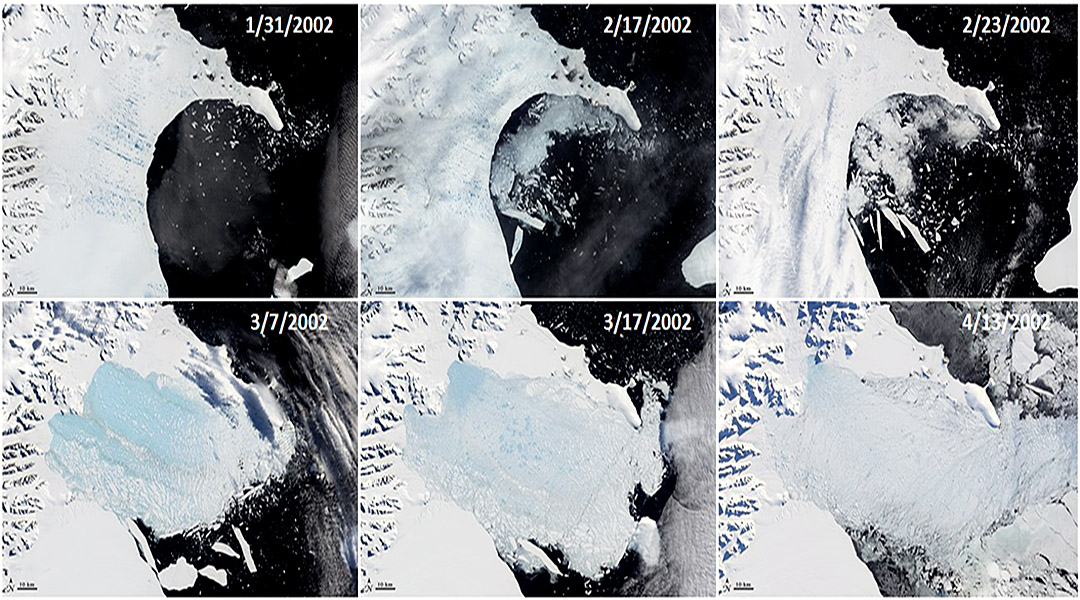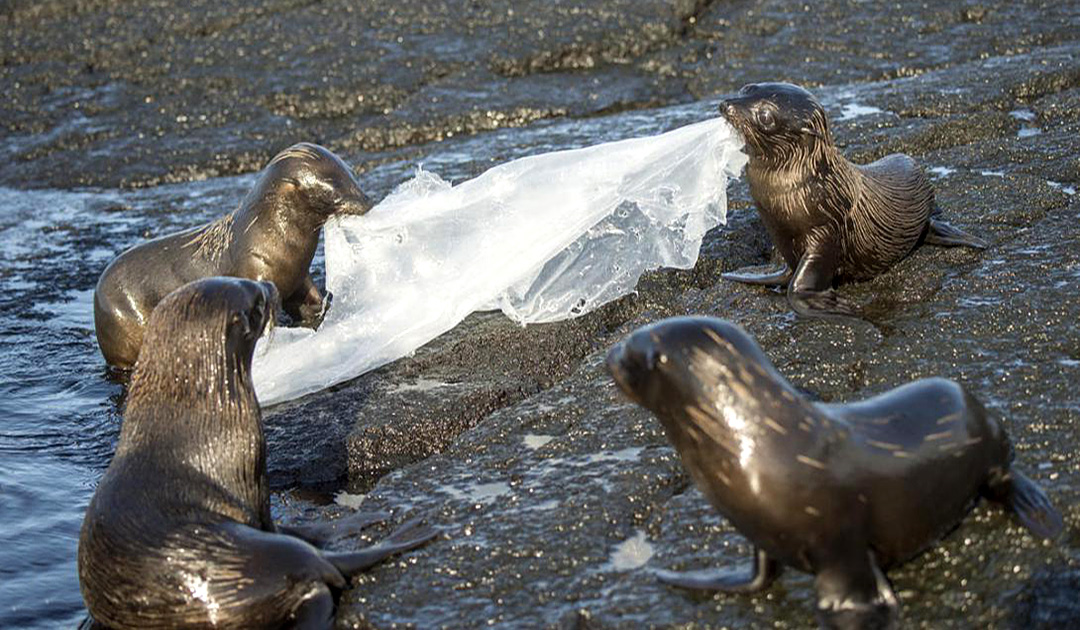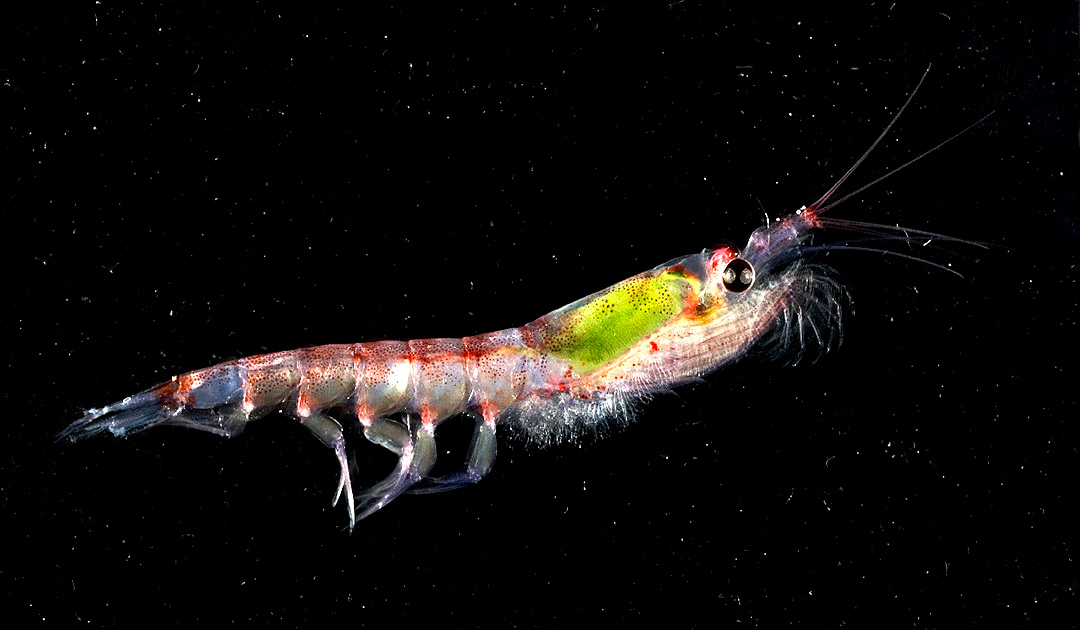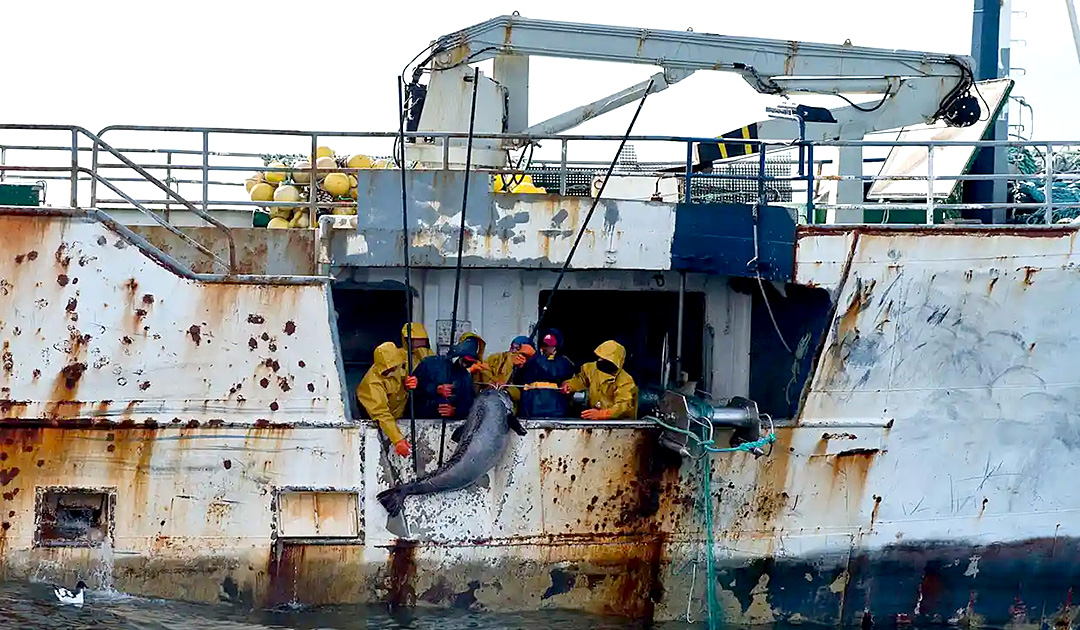
Just over 200 years ago, Antarctica was a pristine untouched continent. Now the southern continent is visited by more than 50,000 tourists annually, without counting scientists who conduct their various studies here. This puts a strain on the southernmost continent, and the cool temperatures mean that damage to the environment will be very slow to recover. Climate change, illegal fishing and pollution put additional strain on the southernmost continent. Experts like Dr. Dana Bergstrom of the Australian Antarctic Division warn and have listed the following six danger points that could massively change Antarctica in the coming decades.

1. tourism
Every year, Antarctica is visited by a large number of tourists. In addition to the emission of carbon dioxide and “black carbon” by the ships and airplanes, there is also the possibility of bringing non-native insects, spores and seeds to the continent that can displace native species, despite elaborate measures on the part of the tour operators. In addition, there is also the danger that wild animals can be massively disturbed by careless tourists.
And this despite the fact that tourists on islands and the mainland are obliged to follow the recommendations of shipping companies and tourist guides. For example, proximity to wildlife is mandated and you are not supposed to step on lichen, leave trash, or take “souvenirs” of wildlife. Smoking is allowed on the ship only in designated areas. Smoking on land is strictly prohibited.
But the problem lies more in the growth of the industry and where to visit. Tourism in Antarctica is mainly limited to 90% of the Antarctic Peninsula. In addition, tourism to Antarctica had grown enormously in recent years.
Prior to the pandemic, a total of around 74,000 tourists traveled to Antarctica in the 2019/20 season, 18,500 of them as cruise only, i.e. without landing on the continent or on the nearby sub-Antarctic islands. In the following season, there were only 23,000 visitors due to the pandemic.
In the current 2022/23 season, a total of more than 100,000 visitors are expected, according to industry representative IAATO. Of these, 75,000 visitors will enjoy shore excursions and 25,000 “cruise only” visitors will just cruise by.
In addition, there are numerous activities under the term ‘expedition’, whereby the borderline from expedition to “nonsense-unnecessary” cannot be precisely determined. In order to get a grip on the increasingly frequent excesses, the regulations would have to be tightened up so that Antarctica does not degenerate into a ‘festival lodge’ for everyone.

2. climate change
Global warming and melting ice sheets are a big problem for the region, especially in the long term. Global climate change is most pronounced in West Antarctica. Significant ice retreat and ice shelf collapse is occurring in this part of Antarctica. As average air and water temperatures rise, more rivers form on the ice and crack the underlying ice. This was also one of the reasons why the 12,000-year-old Larsen Glacier collapsed. Other ice shelves could suffer the same fate, researchers state.
In the Weddell Sea, several large icebergs have broken off their glaciers in recent years, but this is only partly related to climate change. Nevertheless, this is a loss of ice from Antarctica.

3. snow and marine pollution
One threat to Antarctica is microplastic, which washes into the sea from the coasts of Antarctica and sub-Antarctic islands. For the first time last summer, snow was discovered in which 29 plastic particles were found after melting in one liter of water. Unsurprisingly, many times more microplastics were found near research stations than in the rest of the continent. This could indicate that the activities of scientists were the reason for its appearance on the mainland. However, ocean and air masses could also be a source of input. More detailed studies could provide further information here.
On the shores of nearby islands, waves bring ashore the remains of fishing equipment and other parts. In the process, wild animals mistake trash for food, eat it, and occasionally injure themselves on it. Seals, penguins and other marine life often become entangled in fishing nets, often resulting in their deaths.
To protect Antarctica from pollution and negative human impacts, the Antarctic Treaty was signed in Washington on December 1, 1959, and entered into force on June 23, 1961. There are currently 46 signatories to the treaty, including the United States, Russia, China, India, Japan, Germany and France.
The Antarctic Treaty stipulates that the uninhabited Antarctic between 60 and 90 degrees south latitude is reserved exclusively for peaceful use, especially scientific research. The document also prohibits any activity related to the extraction of mineral resources.

4. loss of biodiversity
The extinction of any species is a serious loss to biodiversity. It can disrupt the food chain and lead to a change in the ecosystem of the entire continent. As a result of global warming, sea ice cover, which is necessary for the survival of virtually all animals on and near the continent, is shrinking.
The Southern Ocean is home to 88% of the benthic fauna, the creatures that live on the ocean floor. Most of the large whales and penguins are found here. At least 40% of the animal species in Antarctica are endemic, meaning they do not occur anywhere else in the world.
Antarctic krill(Euphausia superba) is one of them. The total biomass of Antarctic krill is estimated to be up to 725 million tons. Many species depend on it for their survival. The small crustaceans are a major food source, e.g. for seals and penguins. Krill is sensitive to rising water temperatures. Therefore, its stocks suffer from global warming. The crustacean’s existence is also threatened by excessive fishing and marine pollution.

5. fishing and illegal fishing
As fish stocks dwindle everywhere, interest in expanding Antarctic fisheries is growing. Without proper control, the Southern Ocean is at risk of over-exploitation of natural resources. Potential impacts of fishing include declines in predator populations, destruction of marine habitat, and deaths of non-target species caught in nets.
For example, longline fishing is dangerous to albatrosses. This method involves setting out secondary lines equipped with many baited hooks on a main line made of plastic. Longlines can be up to 130 kilometers long and equipped with more than 20,000 baited hooks. Birds can get caught in such hinges, get tangled in them and perish.
Antarctic hake(Dissostichus mawsoni), together with Patagonian toothfish(Dissostichus eleginoides), have been caught illegally off the coast of Antarctica in large quantities in recent years. They are now endangered by overfishing.

6. mining of minerals
The treaty, signed more than 60 years ago, states that the continent is to be kept free of war, weapons and nuclear waste. In the following decades, further rules preventing mineral extraction and oil drilling made Antarctica the world’s largest protected area. But now climate change is undermining that protection.
Interest in the mineral resources of the icy continent is growing from year to year as reserves on other continents are depleted.
The continent has about 900 ore deposits as well as coal, oil and gold. Today, mining is hampered by the ice sheet – its melting to facilitate access to resources can damage ecosystems and lead to sea level rise.
It is important to remember that not only the future of the continent, but that of the entire world depends on solving Antarctica’s environmental problems.
Heiner Kubny, PolarJournal






The rise of tourism is an affront to the men who sacrificed their lives in exploring the continent. Tourists degrade and dishonor the legacy of Scott, Amundsen, Shackleton and their heroic crews. Even those out to set records for the fastest to get from coast to Pole are not without blame in their pursuit of fame.
The Antarctic is not for the frivolous enjoyment of the wealthy globe trotter.